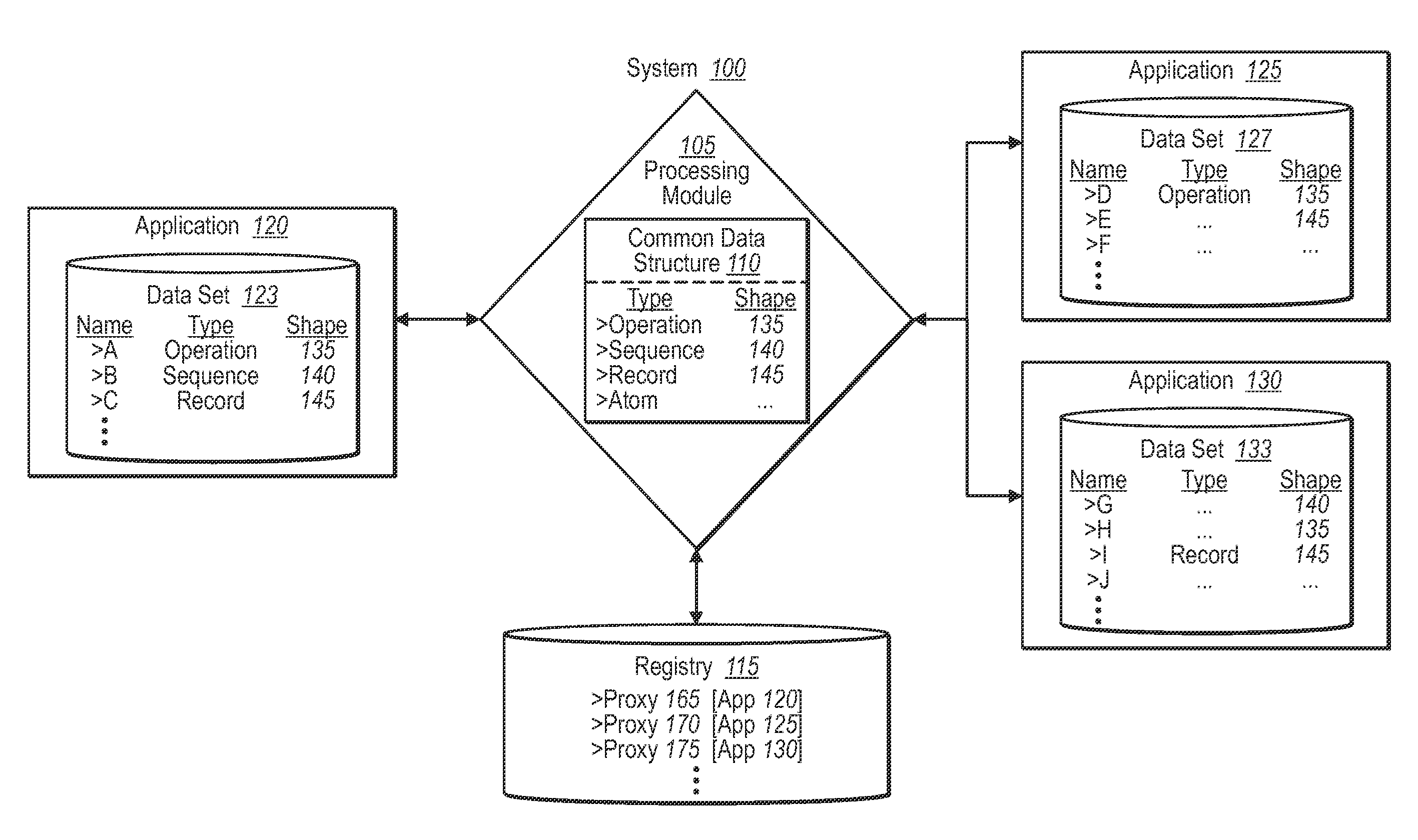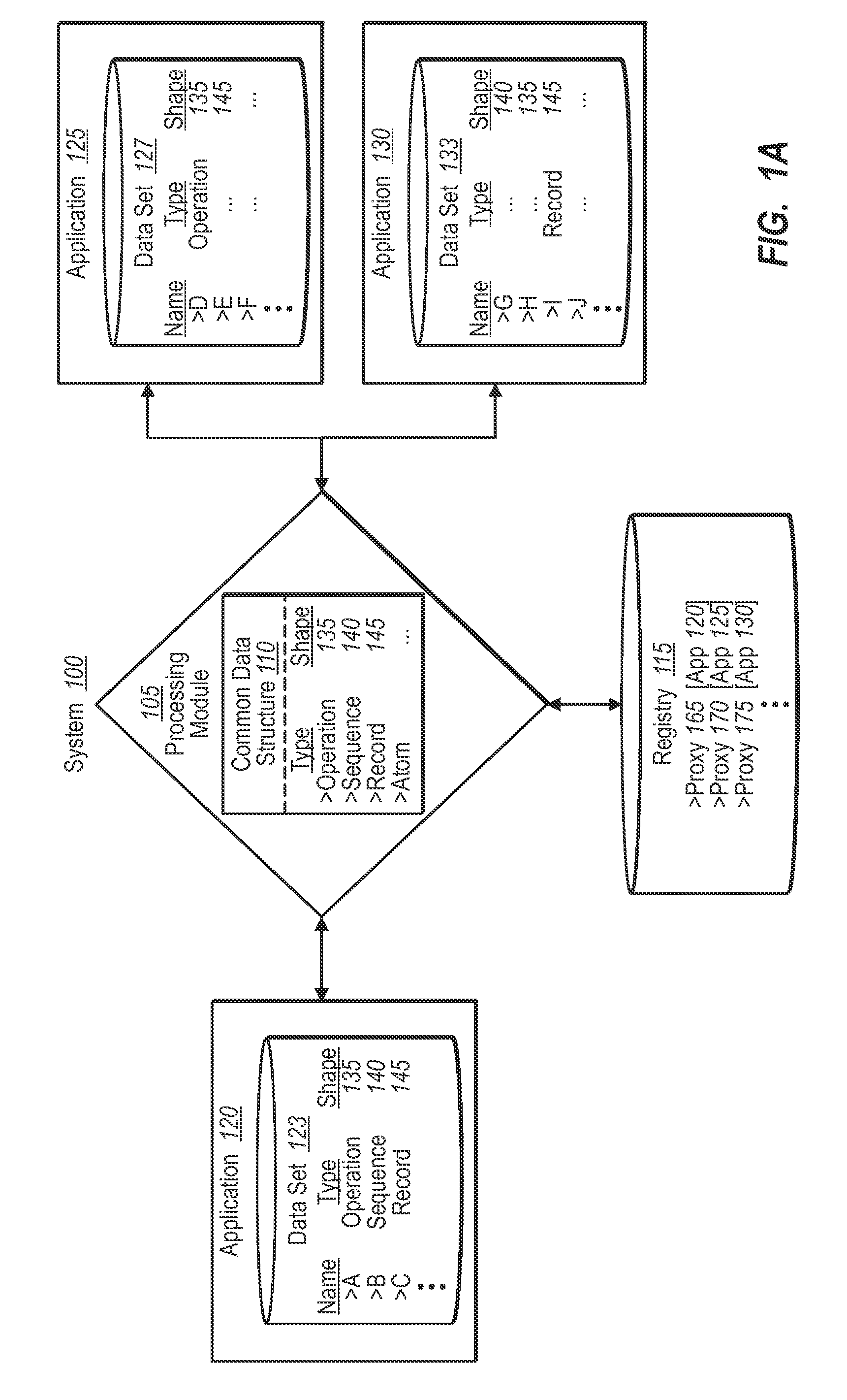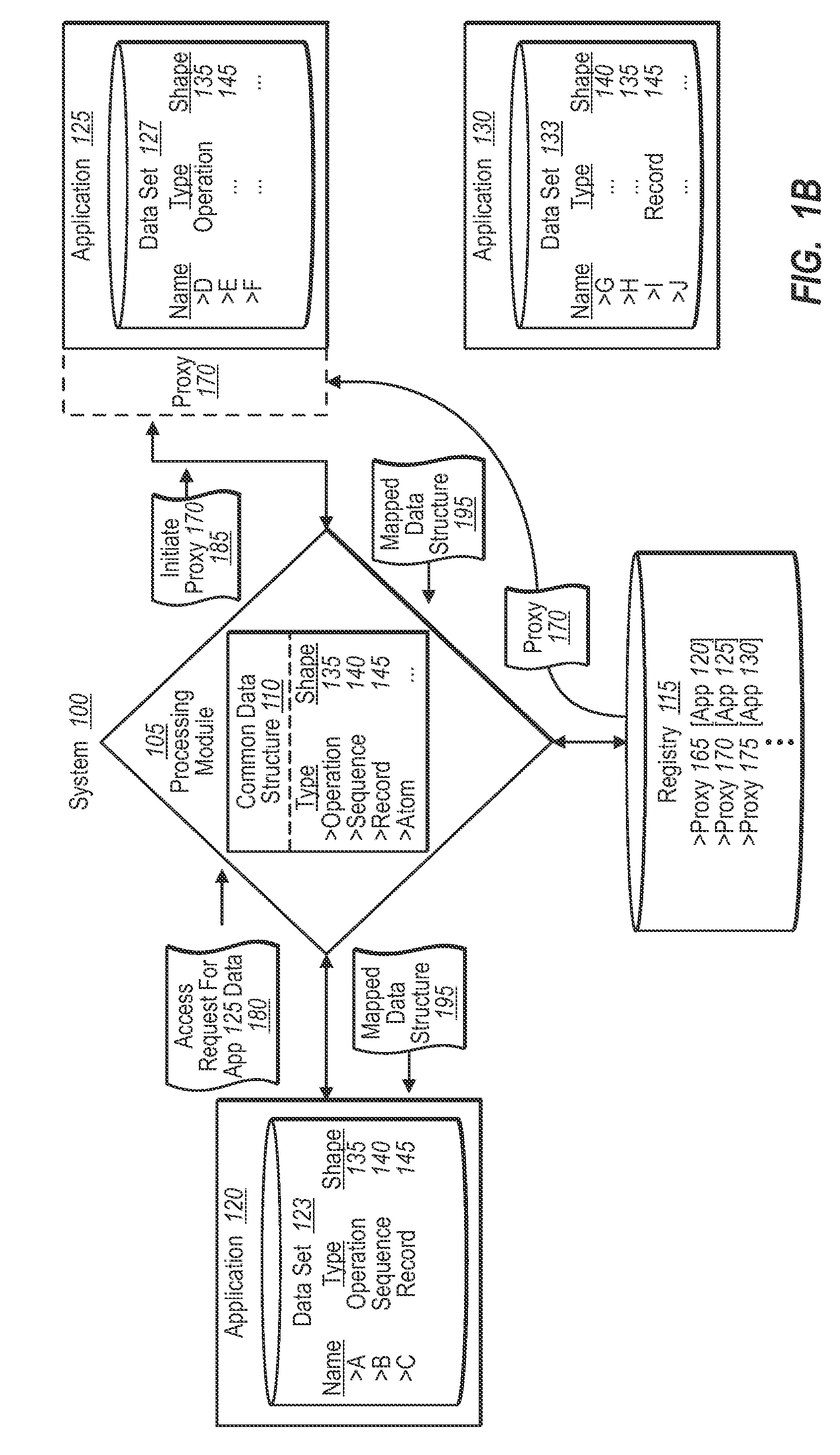Accessing different application data via a common data structure
a data structure and application data technology, applied in the field of accessing different application data via a common data structure, can solve the problems of limiting the speed and customizability of the way some application programs operate, structural mismatches can occur, and the conversion of structural types tends to be more complex
- Summary
- Abstract
- Description
- Claims
- Application Information
AI Technical Summary
Benefits of technology
Problems solved by technology
Method used
Image
Examples
Embodiment Construction
[0021]Implementations of the present invention extend to systems, methods, and computer program products configured to provide access by one application or component to any data of virtually any other application through a common / universal data structure. In one implementation, for example, a request for data by one application involves the initiation of one or more proxies that can map another application's data to one or more schemas in a common data structure. The requesting application can then interact with the requested data through a returned data structure (of mapping information) created by the proxies. As a result, each application in the system can interoperate, regardless of whether they are necessarily aware of the common data structure in advance, and thus whether they have already configured their data in accordance a specific type structure used by other applications.
[0022]Accordingly, and as will be understood more fully herein, at least one implementation of the pr...
PUM
 Login to View More
Login to View More Abstract
Description
Claims
Application Information
 Login to View More
Login to View More - R&D
- Intellectual Property
- Life Sciences
- Materials
- Tech Scout
- Unparalleled Data Quality
- Higher Quality Content
- 60% Fewer Hallucinations
Browse by: Latest US Patents, China's latest patents, Technical Efficacy Thesaurus, Application Domain, Technology Topic, Popular Technical Reports.
© 2025 PatSnap. All rights reserved.Legal|Privacy policy|Modern Slavery Act Transparency Statement|Sitemap|About US| Contact US: help@patsnap.com



